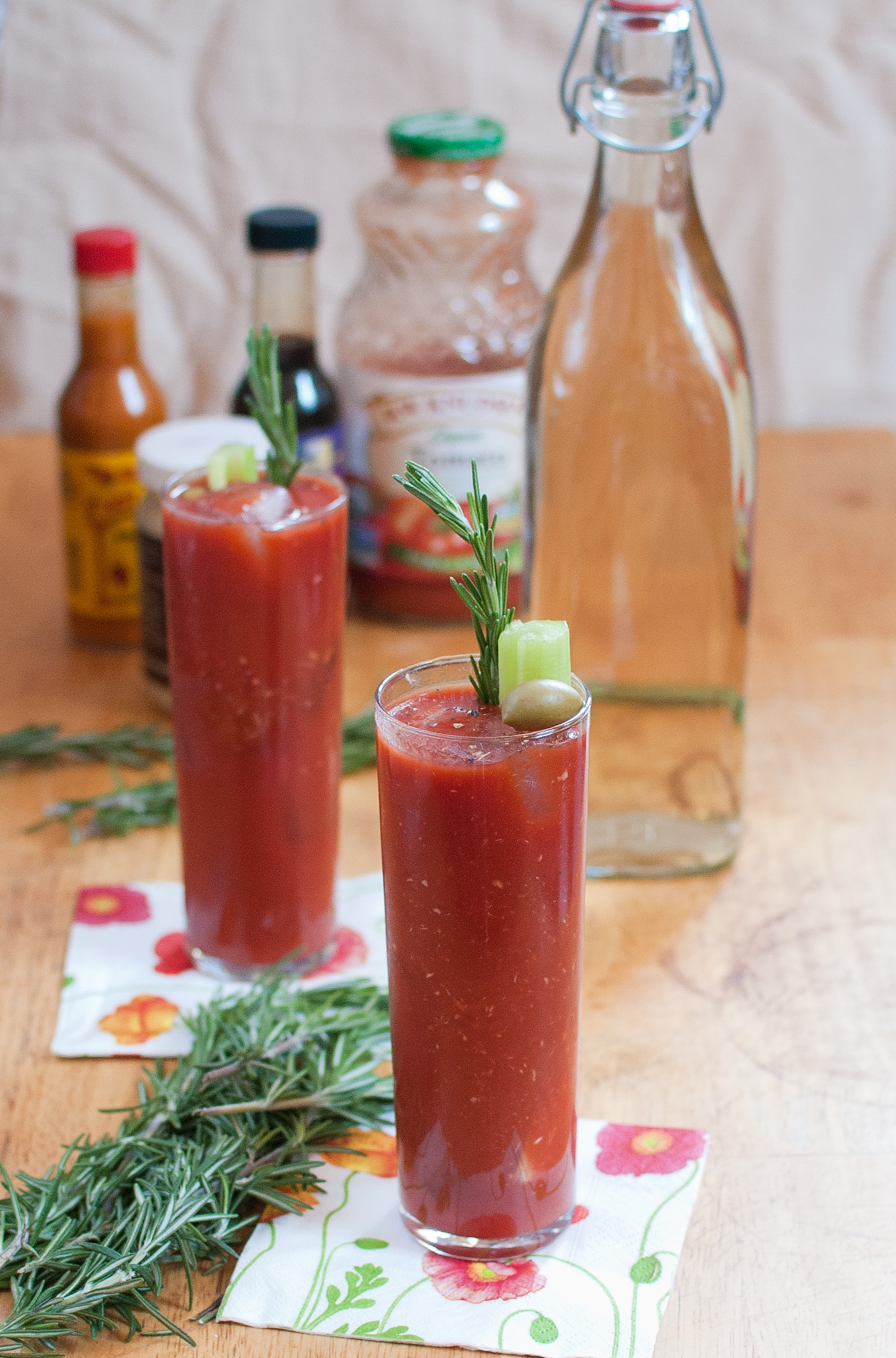
Conversely, you’ll get the best results from fresh herbs like thyme or rosemary, rather than dried herbs. Dried fruits will generally have more concentrated flavor which releases into the spirit as the alcohol is absorbed. Juicy fruits have a lot of natural water that lock flavors inside and won’t always integrate well unless muddled. Dried fruits largely work better than fresh fruits in spirits. Chop larger ingredients, like peppers, into smaller pieces to create more surface area if you want a stronger-tasting infusion. Tailor how many seeds you include based on how spicy you want your final infusion. When infusing spirits with hot peppers (jalapeño, habanero, etc.), remember that the spice comes from the seeds, while the flavor comes from the skins and flesh. Some ingredients may benefit from longer infusion time, but after a week you’ll find that most of your added ingredients’ flavors will have been extracted by the alcohol. Give the container a good shake once a day, and taste the mixture when you do, until it reaches your preferred taste. If you like the resulting taste, you’ll probably like the infusion.Įxpect to allow 3–5 days of steeping in room-temperature alcohol to achieve a desirable flavor. Sign up Privacy PolicyĪs the wine adage goes, “What grows together, goes together.” This also applies to spirits infusions, and where the spirit hails from.Ī quick cheat to tell if an infusion may be a good combination is to hold a small amount of the ingredient in your mouth and take a sip of the liquor you’re considering. Thank You! We've received your email address, and soon you will start getting exclusive offers and news from Wine Enthusiast. Meanwhile, rum works particularly well to an array of fruits. Whiskey, naturally, plays well with ingredients that complement the spirit’s barrel-aged notes, meaning spices like cinnamon, allspice, vanilla, ginger, dried orange peel or apples. With gin, you may want to shy away from pungent herbs and spices that could butt heads with the botanicals already present, and instead stick to citrus peel or cucumber. Tequila and mezcal take well to ingredients that compliment earthier components, like peppers, cucumber and grapefruit. Just make sure to choose ingredients that play well with the spirit’s base flavor profile. However, all types of spirits can be successfully infused. Neutral in flavor by definition (or at least it used to be), vodka provides a blank canvas to play with, and lets the flavor of your infused ingredients take center stage. 

Vodka is the safest bet when experimenting with DIY flavored liquor. This means most syrups can be created on the fly for cocktails, while flavored liquors will usually need to be prepared days in advance.Ī Bartender's Secret Formula to Create Countless Cocktails at Home Infusing spirits And, in the same way that hot tea is brewed in minutes but iced tea is best steeped overnight, the main thing that affects the infusion is whether you use heat to speed up the process.Īs a rule of thumb, cook most syrups to dissolve sugars and allow flavors to integrate, but infuse spirits at room temperature, so as not to burn off any alcohol and allow more time for flavors to subtly integrate. Making an infused spirit or syrup is like making tea-add a bunch of ingredients you like to a liquid and let them steep.

For bar managers and owners looking to make the most of thin operating margins, it’s cheaper to make something “bespoke” with leftover ingredients from a restaurant’s kitchen, than paying for premade commercial offerings. And for good reason: Custom syrups and liqueurs allow bars to create signature cocktails that can’t always be replicated. Modern cocktail lists spend as much page space touting housemade infusions and tinctures as they do brand-name bottles.







 0 kommentar(er)
0 kommentar(er)
